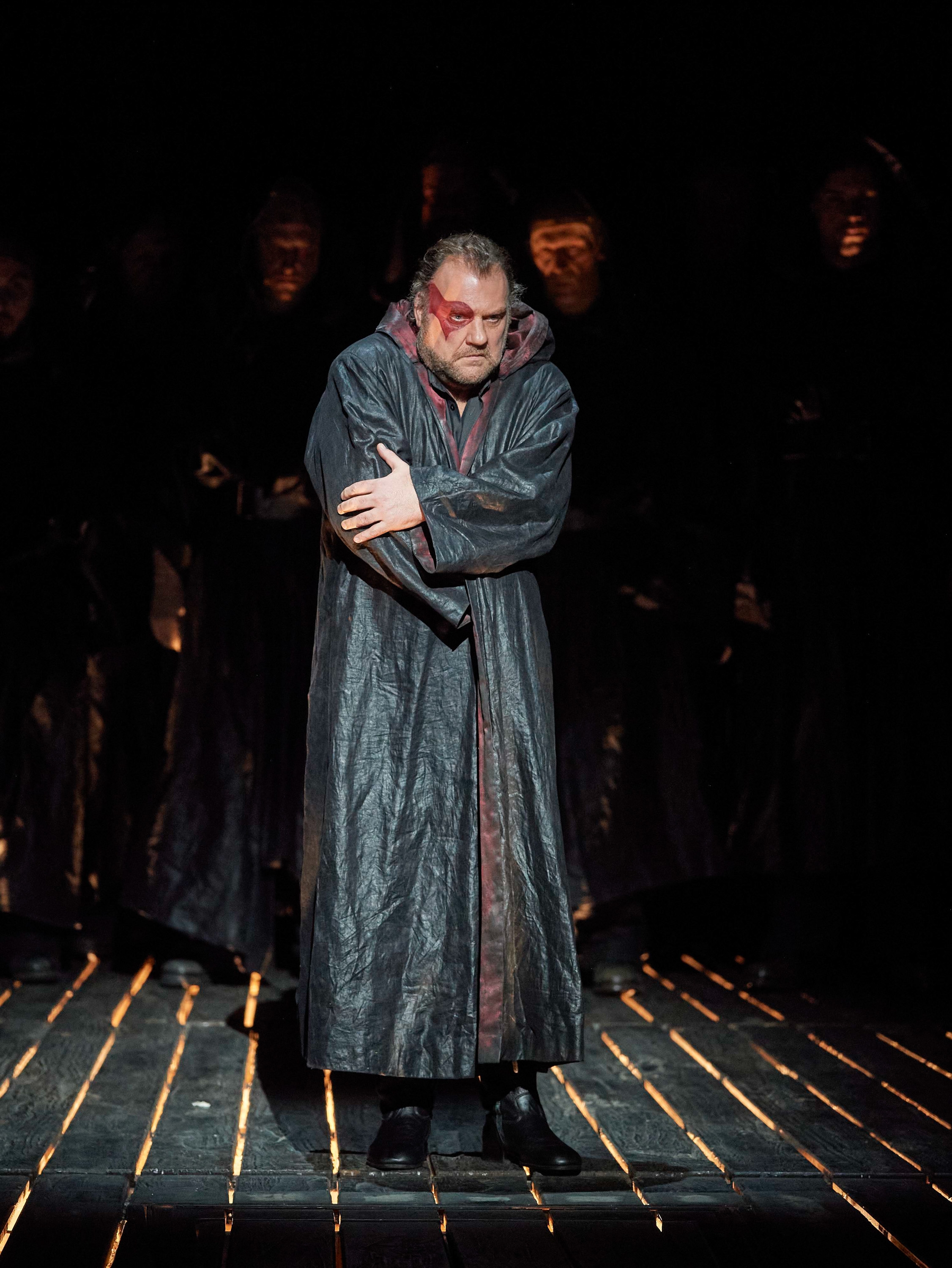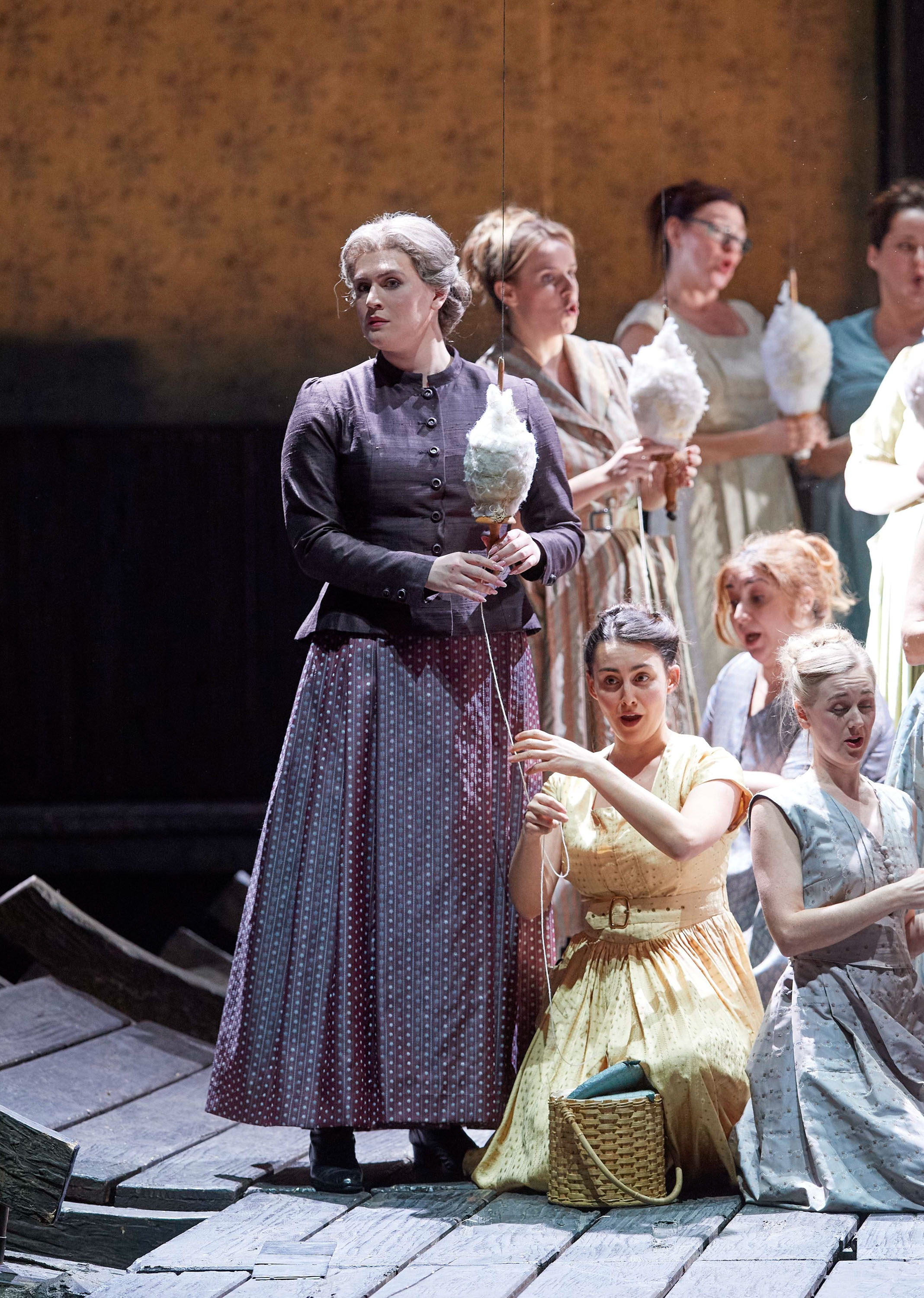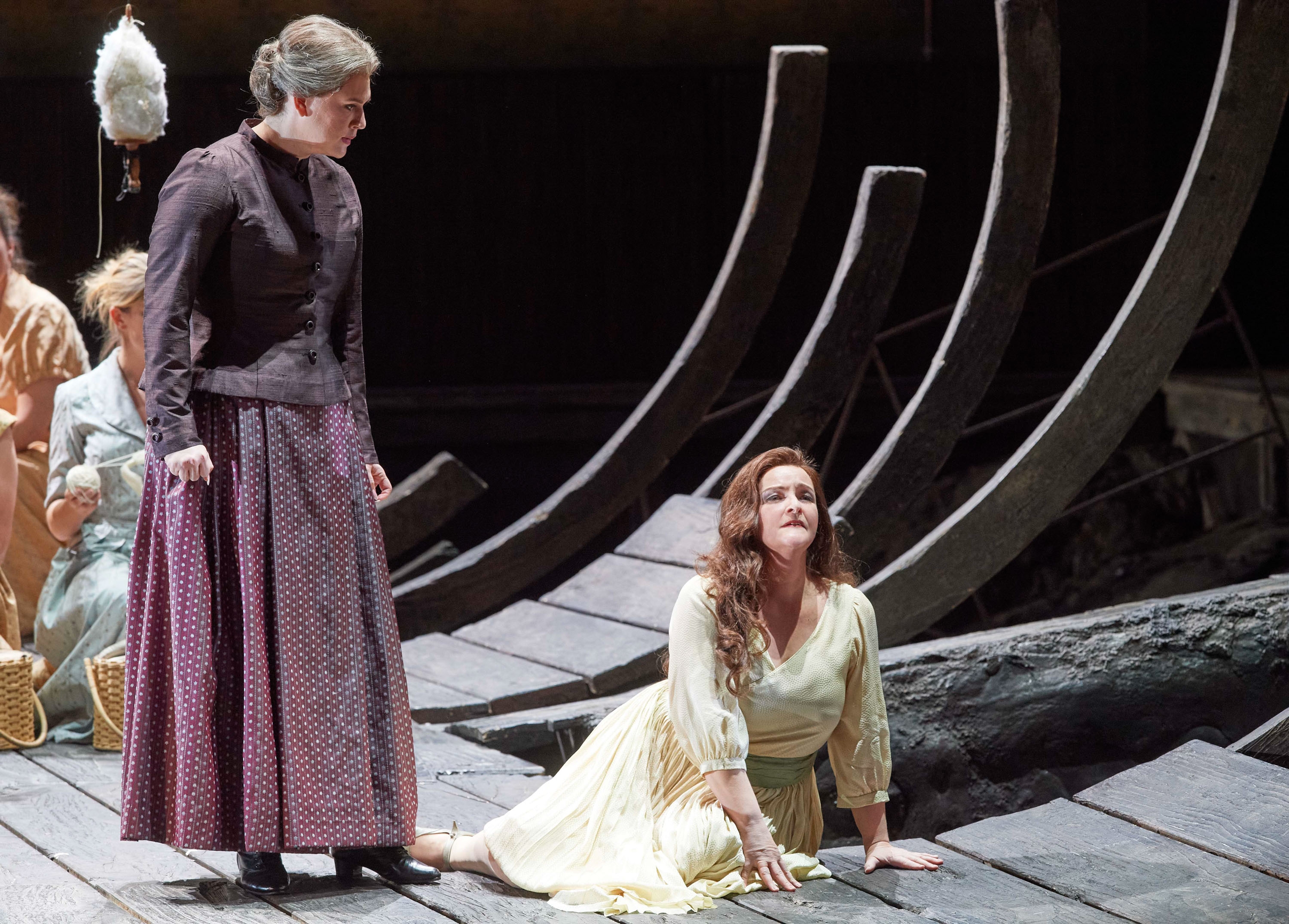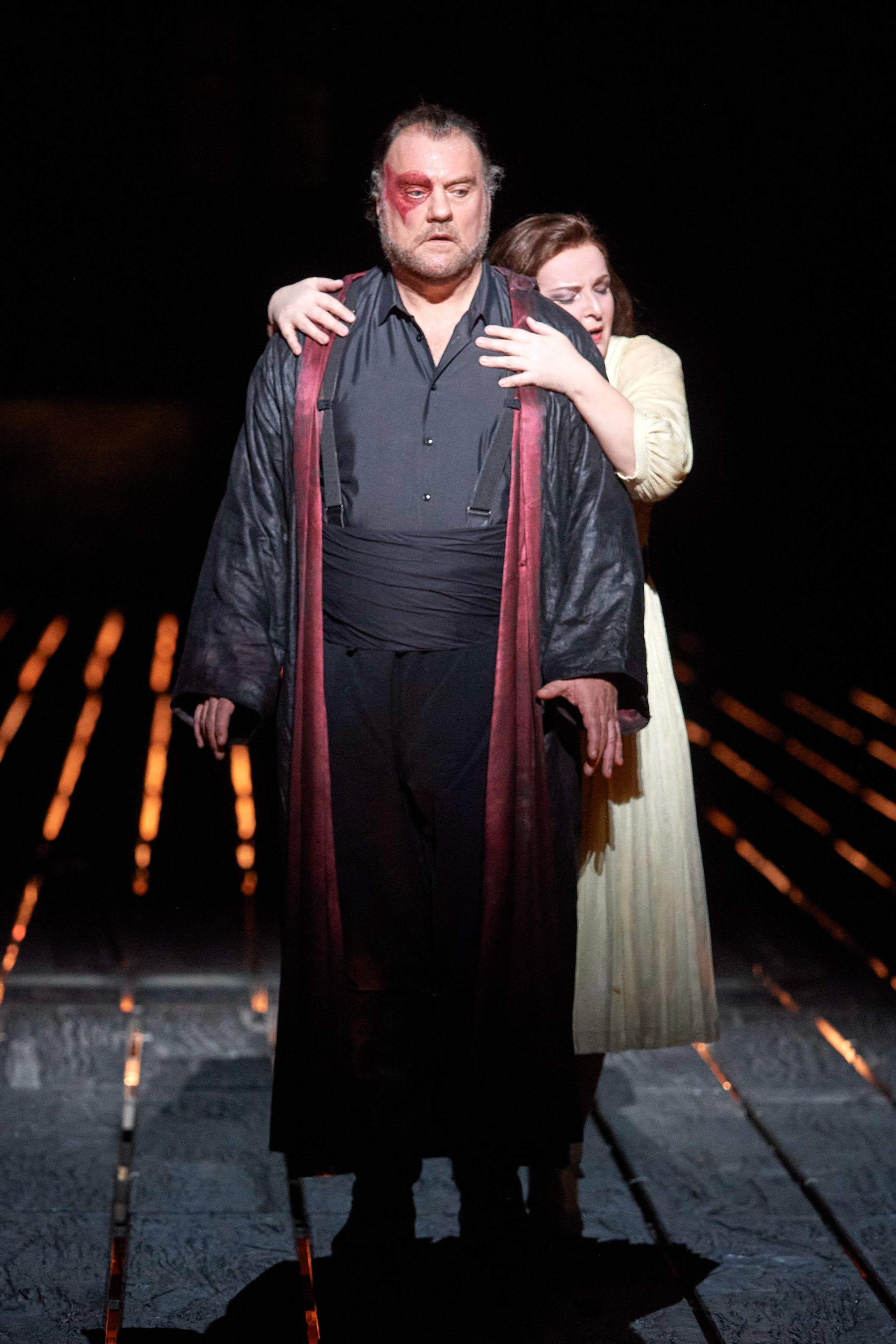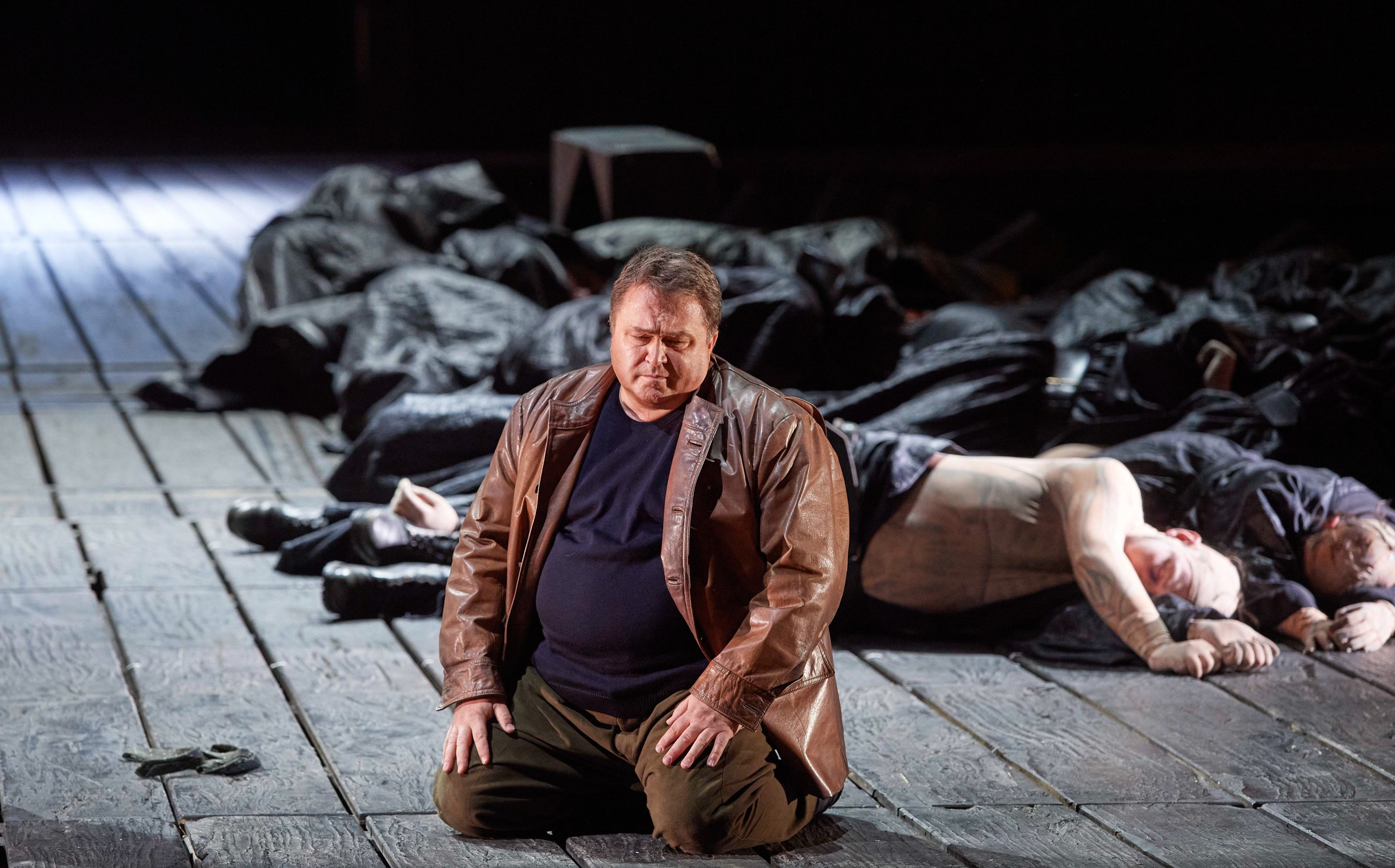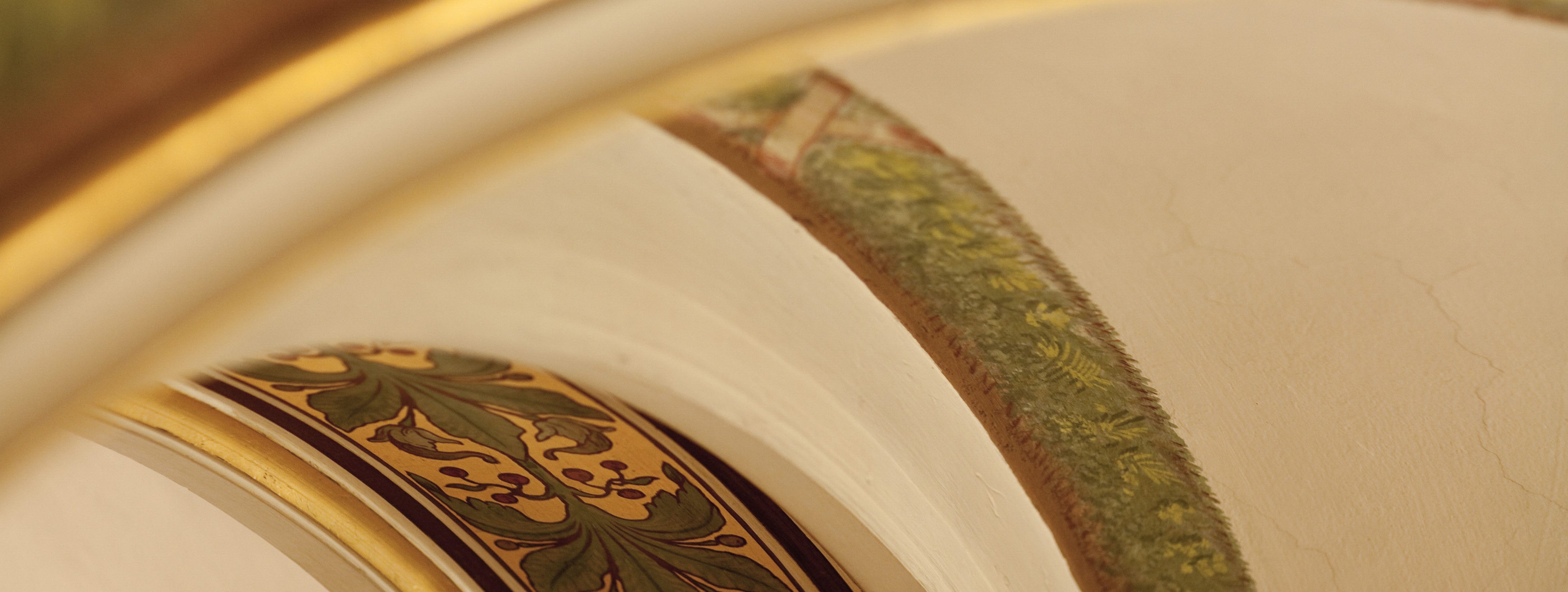About the Production
The sailor's daughter Senta takes pity on the centuries-old legendary figure of the Flying Dutchman.
He was condemned by Satan to sail the world's oceans until a woman frees him from this curse through her loyalty. One day, when Senta's father returns home from a long voyage with a mysterious man, Senta is the only one who recognizes the Flying Dutchman in the sinister foreign captain. At the cost of self-destruction, she decides to redeem him.
Der fliegende
Holländer
Storyline
A storm has caused the sailor Daland's ship to drift into a bay shortly before his return home.
The helmsman on watch falls asleep. Suddenly, a large ship approaches and drops anchor with a crash. Its captain, the Flying Dutchman, is cursed to sail the seas forever. But he is allowed to go ashore every seven years to find a woman who will redeem him through her loyalty.
The Dutchman meets Daland and learns that he has a daughter, Senta. He asks Daland for hospitality and Senta's hand in marriage. In Daland's house, the women await the returning sailors. Senta sings a ballad about the fate of the Flying Dutchman, who once swore to sail off an impregnable cape until he had sailed around it, even if it meant forever. Satan cursed him to do so.
Senta wants to be the woman who releases him from this curse. The hunter Erik, who fears losing Senta's love, wants to dissuade her from her fantastic preoccupation with the Flying Dutchman.
Daland arrives with the Dutchman. As if in a dream, Senta and the Dutchman realize that they belong together - the Dutchman demands and Senta promises eternal fidelity. Daland's sailors celebrate their return home and the women prepare for the engagement. The sailors invite the crew on the Flying Dutchman's ship to celebrate, but they don't move. Suddenly the sea rises, and the dead men let out a terrifying song.
Erik wants to keep Senta from her union with the Flying Dutchman and reminds her of an earlier promise of fidelity. The Dutchman hears this and believes he has been betrayed by Senta. He releases her to save her from death. He flees to his ship.
Director Christine Mielitz and her set designer Stefan Mayer see Daland's and the Dutchman's ships as an image of the entire world, of life itself, in which we all have to find our way around. Accordingly, the scenes on land also have the feel of a ship's interior. The color red is also a special color in this production: it symbolizes blood, revolution, but also a prisoner's space, the Dutchman's psychic space, into which he repeatedly lures others and destroys them.
With The Flying Dutchman, Richard Wagner wrote an opera that was unusually innovative for its time in terms of its harmonic structure, instrumentation, characterization and stucco dramaturgy. Although the work is still indebted to the composer's role models Weber and Marschner and at the same time still shows rudiments of the Italian number opera, its overall approach clearly foreshadows the future master of music drama.
Richard Wagner encountered the old ghost story of the Flying Dutchman, told with ironic verve, in Heinrich Heine. What interested Wagner about the material was, on the one hand, the mythical figure of the wandering undead who never comes to rest and the idea of the "woman of the future", a woman who, through selfless love, is able to bring about the redemption of the cursed. Wagner initially wrote a draft in French for Paris, but it was rejected. He then wrote a German prose draft and later the corresponding libretto. The majority of the music was written shortly afterwards in just a few months.
Wagner's original intention was a one-act opera emphasizing the fast-paced drama of the plot. This concept met with criticism even before the premiere, so Wagner subsequently divided the work into three separate acts or composed corresponding act endings. Additional changes and revisions by Wagner followed in later years. The current production at the Vienna State Opera celebrated its premiere in 2003 and shows the original version without intermission that Wagner originally intended.

